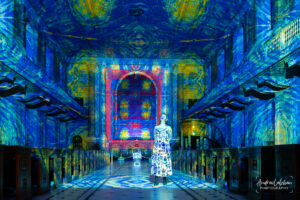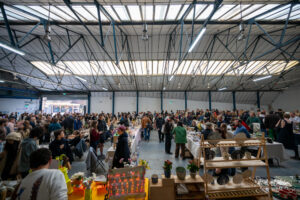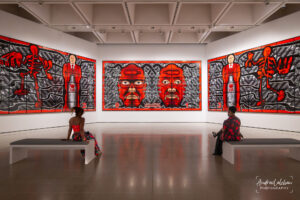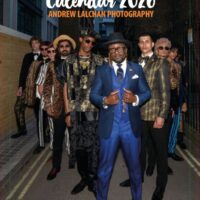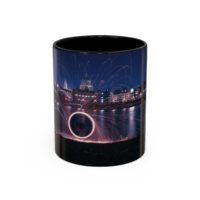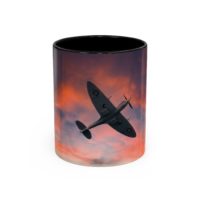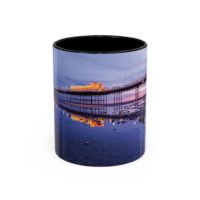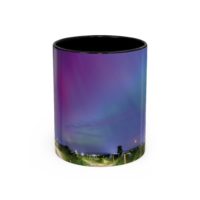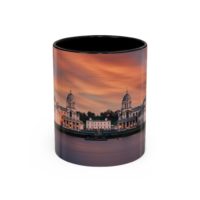Art and friends are the perfect combinations for a hot summer evening. The Kensington and Chelsea Art Trail is back for its 5th year, and it’s the perfect opportunity to see some of the best art in the city. The art trail is free and it’s a great way to see some new locations that the area has to offer.
The Art Trail runs from the 18th of June to the 31st of August 2022 which is also part of the Chelsea & Kensington Art Week. This runs from the 23rd of June to the 3rd of July. Plus a Poetry Corner from 23rd June till 4th July. Various art installations are dotted around the area for your enjoyment so go out and explore.
The theme this year is Nourish, every living being is sustained by Nourishment of some kind. This can be through the consumption of food, photosynthesis or other means. Nourishment can also be intellectual, social and mystical.
Nourishment is also a form of knowledge – food for the soul as well as food for the body. Food is culture. It unites and divides us. It is sensual. It is gluttonous and indulgent. It is pleasure, spirituality and meditation, pain and boredom. It is fun!
When you go around the art trail check out the restaurants, pop-up food places and bars with offers during this period.
The trail takes place in the historic Royal Borough of Kensington & Chelsea which has an abundance of artistic heritage. The areas are diverse from the Duke of York Square to Kensington High Street via Notting Hill.
We were taken on an open-top bus along a route which covered a lot of the installations. Below I have listed a few of the interesting art installations we visited.
The Chelsea Look
The first one we visited was at our starting location in the Duke of York Square. It’s by the artist Roman Lokati who is a multidisciplinary Spanish artist based in London. He developed a new body of work called the Chelsea Look, he created silhouettes of style icons in the area. From the Chelsea Pensioners to the Vivienne Westwood you can find his art around the Duke of York Square and Sloane Street.
Homage to Carnival
The next art installation was by the artist Sokari Douglas Camp CBE. She created a beautiful sculpture in front of the Design Museum and explained the meaning behind the sculpture below.
There are two dancers tussling with a British flag on their “freedom” day representing their carnival as they are placed on a float. They are dressed as characters of John Canoe.
I came across some beautiful watercolours by Isaac Mendes Belisario on the internet of Carnival characters and was struck that they looked like West African Masquerades. I made some sculptures of Nigerian Masquerades, men dressing as spirits, early on in my career. Now, John Canoe is a character that came about because slaves were given the chance to celebrate for a day. The Notting Hill Carnival has nourished London, especially the international communities in the city. I am hoping that a display of Carnival characters will lift spirits; the format, dressing up as a character, is very contemporary… Batman, Spiderman… making an African character with western clothing. I was attracted to the image of a colonial house with shutters and trimmed bushes. This reminded me of the plantations where some of the slaves would have worked. Sugarcane plantations, tea plantations. The luxury of drinking tea is practised and has been adopted as part of English culture, Lipton’s tea Yorkshire tea, and Tetley PG tips. If you are shocked and need calming, you are given tea… which is nourishing. Tying these historical connections to contemporary life is an element of my practice.
Sokari Douglas Camp CBE
Domus
The 3rd installation is by the artist Richard Mackness a discarded plastic food packaging all crushed and laying on the ground (Kensington High Street). It is made out of thin concrete but it is hollow inside. The discarded food package, ubiquitous in the urban environment sits at a point of contrast in city living; how to shelter and sustain the body while nourishing the self.
Objects we encounter in the world are experienced through our physical being - we estimate, measure, and reveal the world to ourselves as a reflection of the body we possess. And for me, the sculpture is a particular discipline; it is a story told in form, mass and surface. It exists in space, sharing the world with every other thing, like a human being.
Richard Mackness
The Right Hand Of God
The next on our trail was in Holland Park (Napolean Gardens) by the Russian artist Konstantin Benkovich. His piece reinterprets the Jewish / Christian iconography of the middle ages.
He escaped from Russia and wanted to do a piece which has the Ukrainian colours and the red of Russia.
Today, as never before, humanity is on the brink of the third world war and the nuclear apocalypse is looming close, threatening self-annihilation. It becomes our personal duty to read the sign and prevent the approaching catastrophe.
Konstantin Benkovich
Cellular Amulet
The final piece we saw was by Charlotte Colbert called Cellular Amulet. It is inspired by the shape of a white blood cell which is part of our immune system. Charlotte created the sculpture during the lockdown. Its scale and playful reflective surface remind us that ultimate protection is born of play and togetherness.
It is located at 13 Bramley Road, Kensignton.
Find out more on the links below and check out my photographs from the preview.
For a full list of artists check out the KCAW website where there is a map of the various locations around the borough.
Many thanks for reading, sign up for my newsletter for events each month in London and the surrounding area just like the Art Trail.

